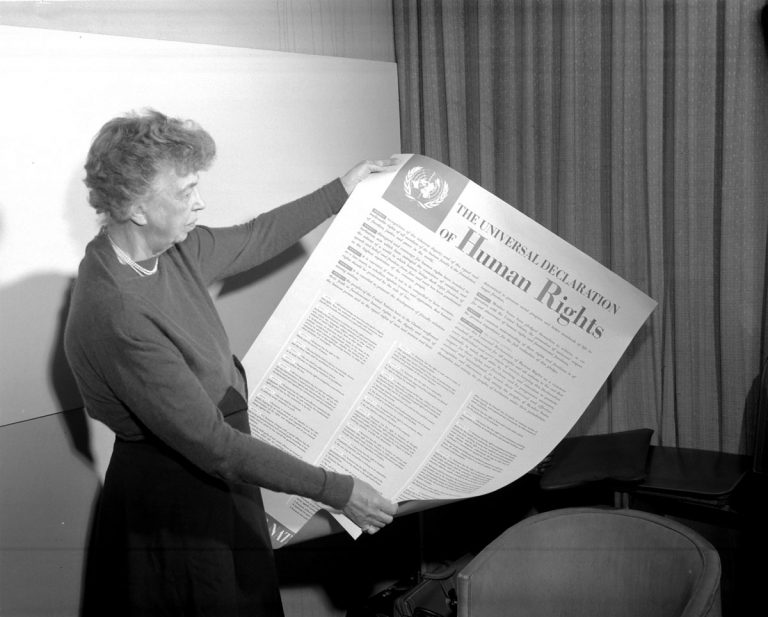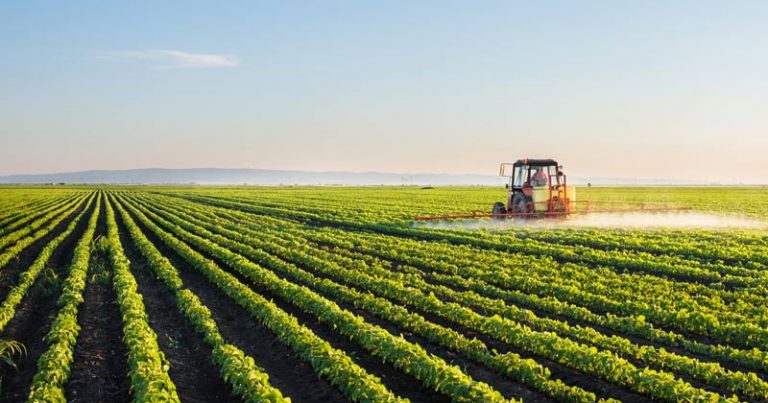This was further elaborated in the International Covenant on Economic, Social and Cultural Rights in 1966.
by Daisy Tam
published on 19 December 2018
Food was first mentioned in the Universal Declaration of Human Rights in 1948.
This is the foundational document that sets out a common understanding of human rights and freedom for all peoples and all nations. It was adopted by the United Nations General Assembly in Paris 1948.
The Right to Food is framed as an essential element of adequate living.

Article 25: (link)
This was further elaborated in the International Covenant on Economic, Social and Cultural Rights in 1966.
In Article 11, the ICESCR points to 2 key elements of the right to food:
Article 11: (link)
a. To improve methods of production, conservation and distribution of food by making full use of technical and scientific knowledge, by disseminating knowledge of the principles of nutrition and by developing or reforming agrarian systems in such a way as to achieve the most efficient development and utilization of natural resources;
b. Taking into account the problems of both food-importing and food-exporting countries, to ensure an equitable distribution of world food supplies in relation to need.
In 1996, nearly 20 years after the Right to Food was called into the Universal Declaration of Human Rights, hunger and under-nutrition was still a widespread phenomenon. Despite the increased production of food, millions of people continued to suffer and die of hunger.
In response, the United Nations Food and Agricultural Organisation (FAO) called for The World Food Summit to accelerate progress and renew commitments from international governments to eradicate hunger.
Rome Declaration on World Food Security: (link)
“Food security exists when all people, at all times, have physical and economic access to sufficient safe and nutritious food that meets their dietary needs and food preferences for an active and healthy life.” (FAO 1996)
Nearly 70 years have passed and hunger remains high on the global agenda. Food security is now understood as closely linked to the effects of climate change.
The 2030 Sustainable Development Agenda signed by the UN Secretary General Ban Ki-Moon in New York lists 17 Sustainable Development goals. It also calls to end hunger and prevent all forms of malnutrition by 2030.
In the drive to end hunger, 2 key elements were highlighted:

UN Sustainable Development Goals (2016-2030) (link)
Goal 2 Zero Hunger:

Sufficient quantities of food available on a consistent basis.

Having sufficient resources to obtain appropriate foods for a nutritious diet.

Appropriate use based on knowledge of basic nutrition & care (water/sanitation).
How do we eradicate hunger and provide food security for the world’s growing population? Different eras had different answers, and the way we conceive, operationalise and measure food security goals translated into very different kinds of policies and yielded drastically different outcomes.
Michael Carolan in his book Reclaiming Food Security pointed out that the concept of “food security” has gone through largely 3 phases:
From the 1940’s to the 1970’s, the answer to feeding the world was through production, specifically the production of calories. The Green Revolution of the 1970’s was a direct result of this way of thinking – to produce as much calories as possible to feed the world.

We now know that the Green Revolution has devastating effects on the environment by using large amount of chemical pesticides and herbicides to boost production.
From the 1970’s, the world realized it was producing enough food to feed the world, but people were still suffering from hunger. So the focus was shifted to the distribution of food, and the market was then considered a solution for allocating resources.
In the 1980’s as the neoliberal market gathers force, the market continues to dominate much of the decision making processes. Foreign Direct Investment allowed foreign businesses to enter new markets by investing in businesses located elsewhere, so that the foreign firms could own a substantial part of the business.
This model is particularly suited to the circulation of processed foods affecting individual and societal well-being, and reduces food sovereignty of nations.